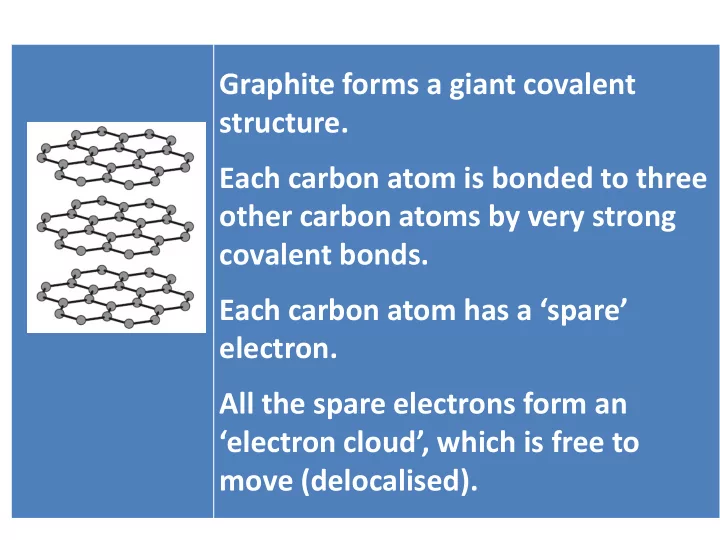

Graphite forms a giant covalent structure. Each carbon atom is bonded to three other carbon atoms by very strong covalent bonds. Each carbon atom has a ‘spare’ electron. All the spare electrons form an ‘electron cloud’, which is free to move (delocalised).
Substance Description Picture A hard, clear Diamond non-metal A soft, slippery, grey, Graphite solid non- metal
Property Diamond Graphite 3652-3697 o C 3550 o C Melting point (sublimes) Hardness Very hard Very soft Electrical Poor Good conductivity
Diamond forms a giant covalent structure. Each carbon atom is bonded to four other carbon atoms by very strong covalent bonds. There are no ‘free’ electrons.
Graphite is used for pencils and as a lubricant to reduce friction on moving surfaces.
An electric current is the movement of free electrons.
Diamonds are used for jewellery and in drills for cutting through rock.
The layers in graphite are held together by weak forces. These forces are easily broken.
Recommend
More recommend